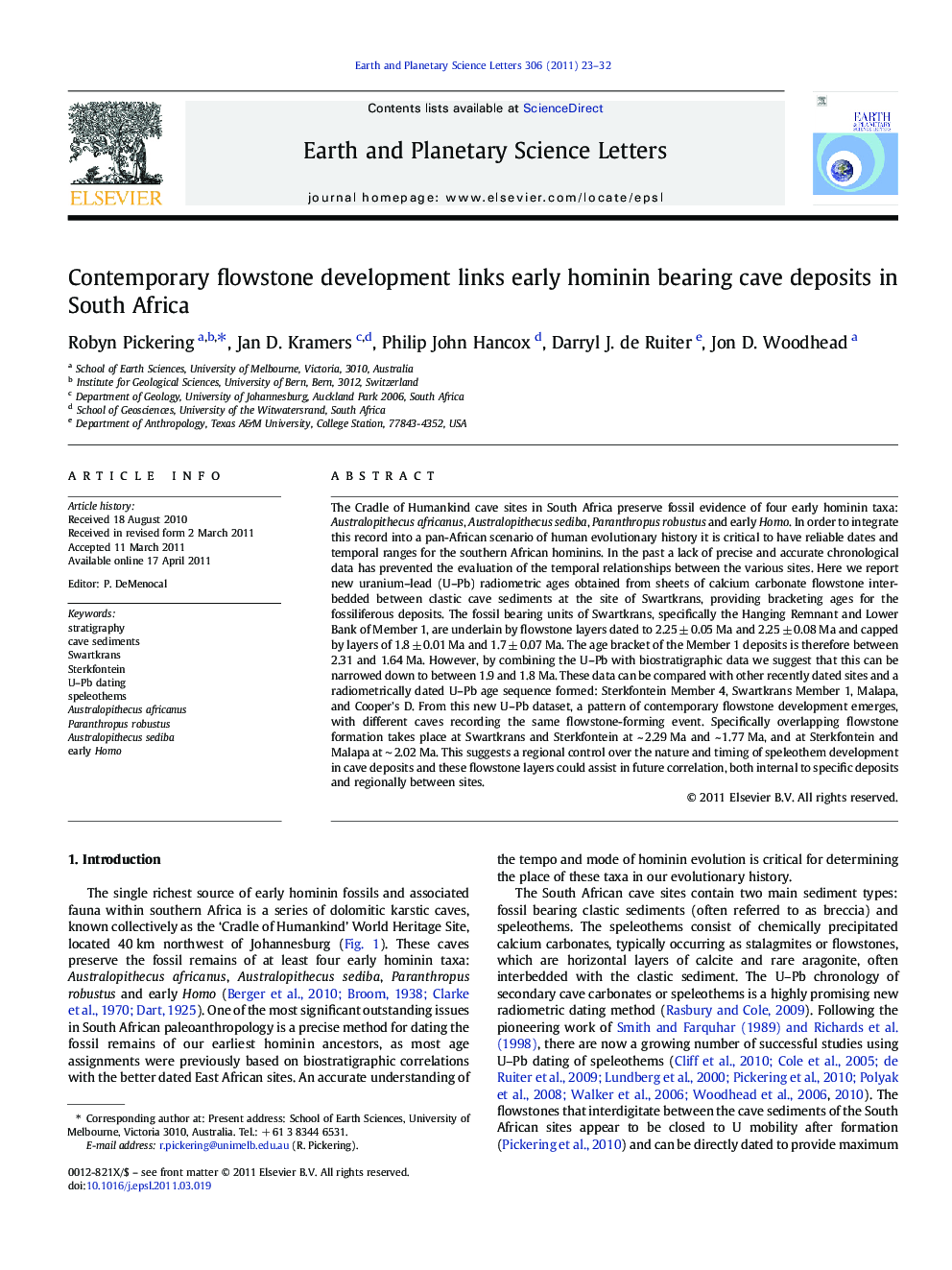| Article ID | Journal | Published Year | Pages | File Type |
|---|---|---|---|---|
| 4678060 | Earth and Planetary Science Letters | 2011 | 10 Pages |
The Cradle of Humankind cave sites in South Africa preserve fossil evidence of four early hominin taxa: Australopithecus africanus, Australopithecus sediba, Paranthropus robustus and early Homo. In order to integrate this record into a pan-African scenario of human evolutionary history it is critical to have reliable dates and temporal ranges for the southern African hominins. In the past a lack of precise and accurate chronological data has prevented the evaluation of the temporal relationships between the various sites. Here we report new uranium–lead (U–Pb) radiometric ages obtained from sheets of calcium carbonate flowstone inter-bedded between clastic cave sediments at the site of Swartkrans, providing bracketing ages for the fossiliferous deposits. The fossil bearing units of Swartkrans, specifically the Hanging Remnant and Lower Bank of Member 1, are underlain by flowstone layers dated to 2.25 ± 0.05 Ma and 2.25 ± 0.08 Ma and capped by layers of 1.8 ± 0.01 Ma and 1.7 ± 0.07 Ma. The age bracket of the Member 1 deposits is therefore between 2.31 and 1.64 Ma. However, by combining the U–Pb with biostratigraphic data we suggest that this can be narrowed down to between 1.9 and 1.8 Ma. These data can be compared with other recently dated sites and a radiometrically dated U–Pb age sequence formed: Sterkfontein Member 4, Swartkrans Member 1, Malapa, and Cooper's D. From this new U–Pb dataset, a pattern of contemporary flowstone development emerges, with different caves recording the same flowstone-forming event. Specifically overlapping flowstone formation takes place at Swartkrans and Sterkfontein at ~ 2.29 Ma and ~ 1.77 Ma, and at Sterkfontein and Malapa at ∼ 2.02 Ma. This suggests a regional control over the nature and timing of speleothem development in cave deposits and these flowstone layers could assist in future correlation, both internal to specific deposits and regionally between sites.
Research highlights► South African cave sites preserve early human (hominin) fossils; ► Previously sites and fossils were not directly or thoroughly dated; ► We use Uranium-Lead dating on flowstones to provide precise new ages; ► Three time periods record contemporary flowstone growth, aiding in correlation; ► Now possible to integrate South African fossils into scenarios of human evolution
